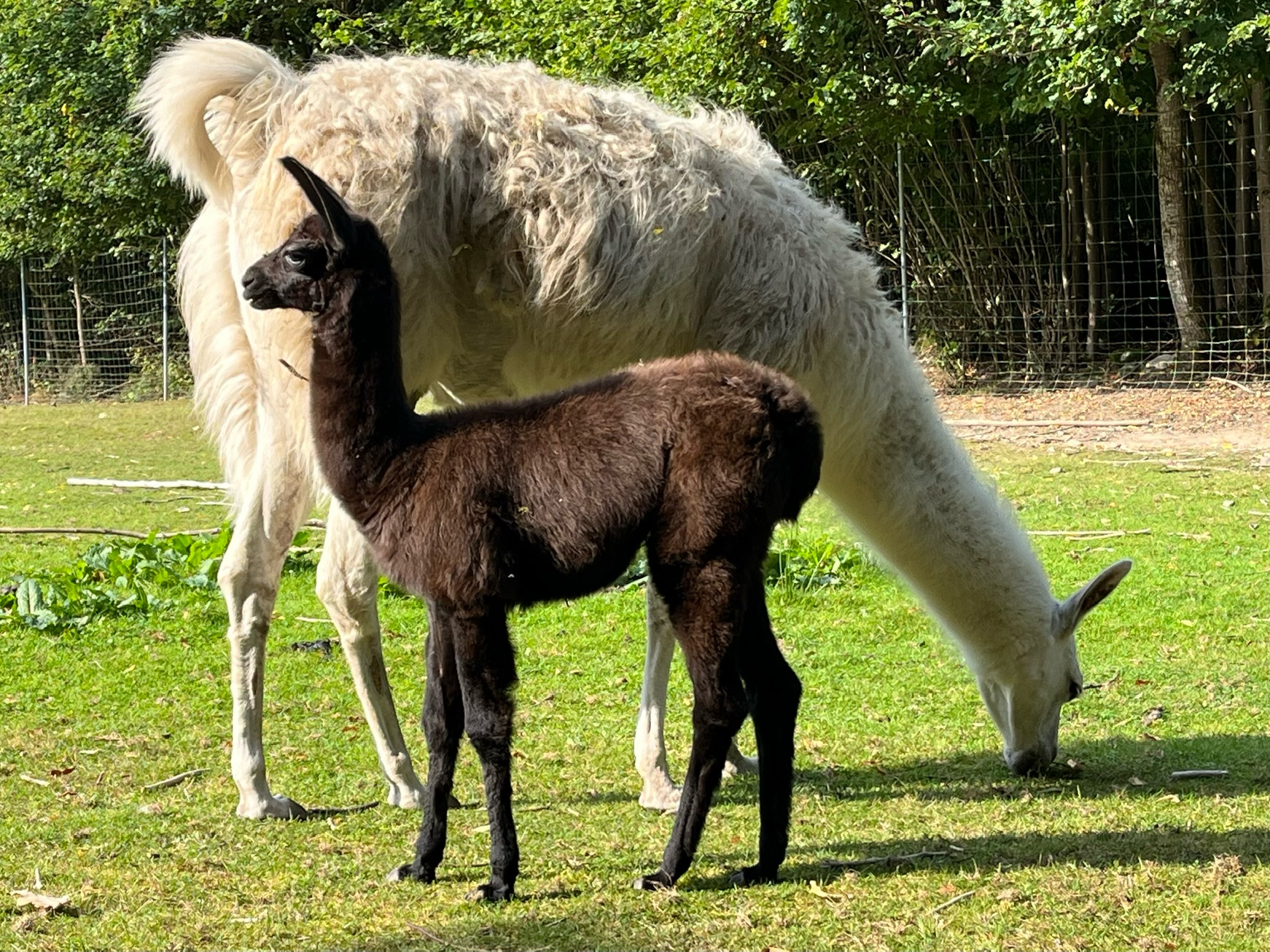Llama

The llama (Lama glama) is a domesticated South American camelid, widely used as a meat and pack animal by Andean cultures since the pre-Columbian era. Llamas are social animals and live with others as a herd. Their wool is soft and contains only a small amount of lanolin. Llamas can learn simple tasks after a few repetitions. The ancestors of llamas are thought to have originated on the Great Plains of North America about 40 million years ago and subsequently migrated to South America about three million years ago during the Great American Interchange.
A full-grown llama can reach a height of 1.7 to 1.8 m (5 ft 7 in to 5 ft 11 in) at the top of the head and can weigh between 130 and 272 kg (287 and 600 lb). At maturity, males can weigh 94.74 kg, while females can weigh 102.27 kg. At birth, a baby llama (called a cria) can weigh between 9 and 14 kg (20 and 31 lb). Llamas typically live for 15 to 25 years, with some individuals surviving 30 years or more.
Llamas are not ruminants, pseudo-ruminants, or modified ruminants. They do have a complex three-compartment stomach that allows them to digest lower quality, high cellulose foods. The stomach compartments allow for fermentation of tricky foodstuffs, followed by regurgitation and re-chewing. Ruminants (cows, sheep, goats) have four compartments, whereas llamas have only three stomach compartments: the rumen, omasum, and abomasum.
When correctly reared, llamas spitting at a human is a rare thing. Llamas are very social herd animals, however, and sometimes spit at each other to discipline lower-ranked llamas. A llama's social rank in a herd is never static. They can always move up or down the social ladder by picking small fights. This is usually done between males to see which will become dominant. The females are usually only seen spitting to control other herd members. One may determine how agitated the llama is by the materials in the spit. The more irritated the llama is, the further back into each of the three stomach compartments it will try to draw materials from for its spit.